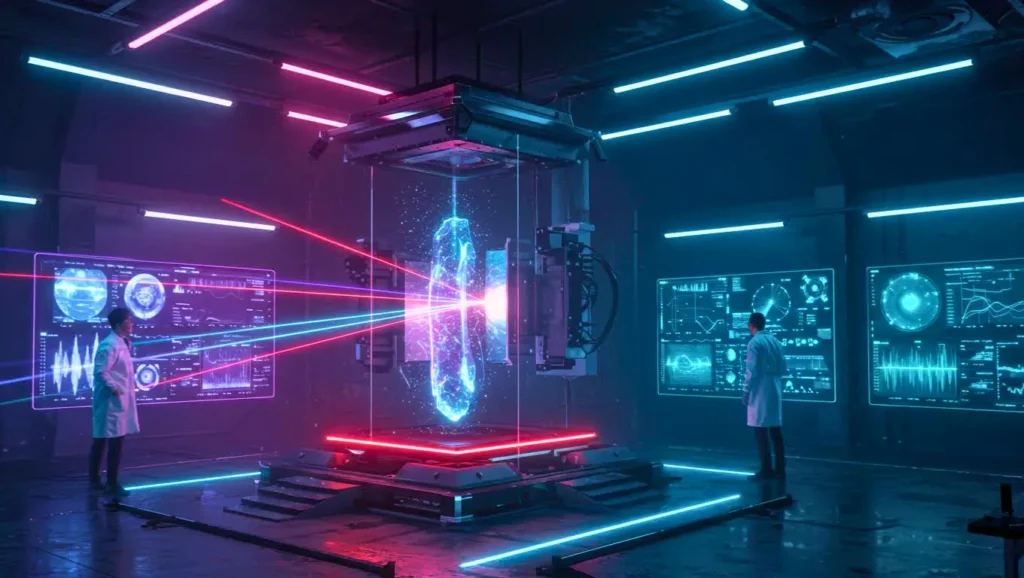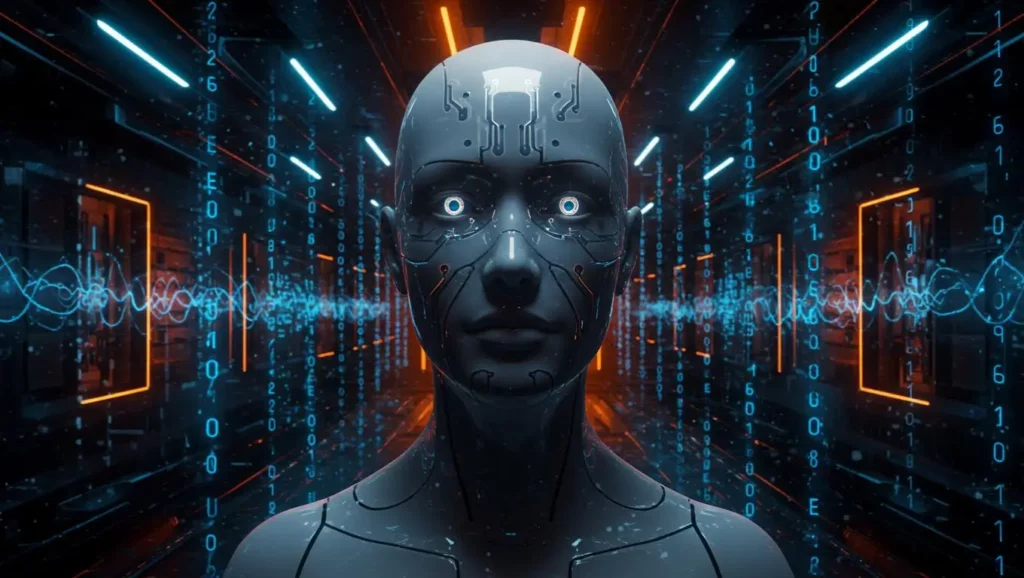What if artificial intelligence could create images using light instead of processors? This is the bold gamble of a team of researchers from the University of California, Los Angeles, led by Professor Aydogan Ozcan. Their invention could potentially transform the way AIs generate images while consuming significantly less energy.
Why AI Image Generators Use So Much Energy and How They Really Work
To understand this innovation, it’s important to first grasp how current image generators, such as Midjourney or OpenAI, operate. These systems utilize diffusion models, a complex technique that involves destroying and then reconstructing images. In simple terms, the AI adds noise (small random dots) to images and then gradually cleans them up to reveal the original, akin to reassembling a blurry puzzle piece by piece.
However, this visual feat comes with a downside: it requires an enormous amount of computational power. Each generated image demands servers that are heavy on electricity and water for cooling. Thus, while AI-generated images may seem magical, they remain highly energy-intensive.
How Light Replaces Processors to Create Images Using a Fraction of the Energy
Enter Ozcan and his team’s groundbreaking discovery. Instead of offloading millions of operations to processors, they harness the power of light to perform calculations. They first encode data digitally, then a laser beam carries this information to a spatial light modulator (SLM). As it passes through a second SLM, the beam instantaneously reconstructs the image, which the camera captures in a fraction of a second.
In other words, light itself becomes the processor. The results are impressive: while a traditional diffusion model consumes hundreds or thousands of joules per image, this method uses only a few millijoules. Researchers have even managed to create images in the style of Van Gogh with quality comparable to traditional systems.
From Smart Glasses to Data Centers: How This Innovation Could Transform Our Daily Lives
This technology presents very practical applications. For instance, smart glasses could generate images without draining their batteries. Due to its low energy consumption, the system can be integrated into lightweight, autonomous devices without reliance on heavy servers.
Moreover, the environmental benefits are striking. By replacing some computational calculations with light, researchers reduce the carbon footprint of AI. According to Ozcan, this approach demonstrates that innovation and energy efficiency can go hand in hand.
What Challenges Remain Before Widespread Adoption
Nonetheless, all is not yet perfect. Currently, the optical generator primarily produces simple, black-and-white images. Researchers still need to develop the technology to manage complex, colored, high-definition images.
Despite these limitations, the outlook is promising. The team is already collaborating with tech companies to adapt this innovation to the industry. If the project succeeds, this invention could usher in a new era of artificial intelligence: faster, cleaner, and more sustainable.
Ultimately, this advancement showcases that the future of technology relies not only on power but also on the intelligence with which we use it.




